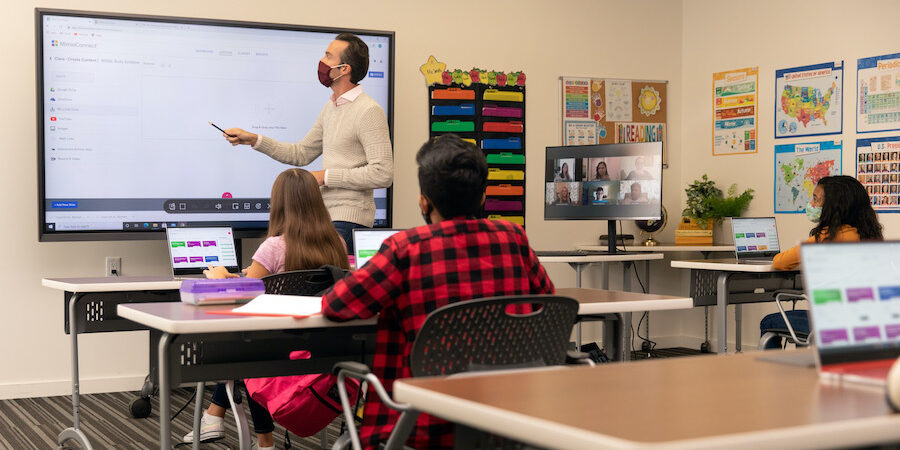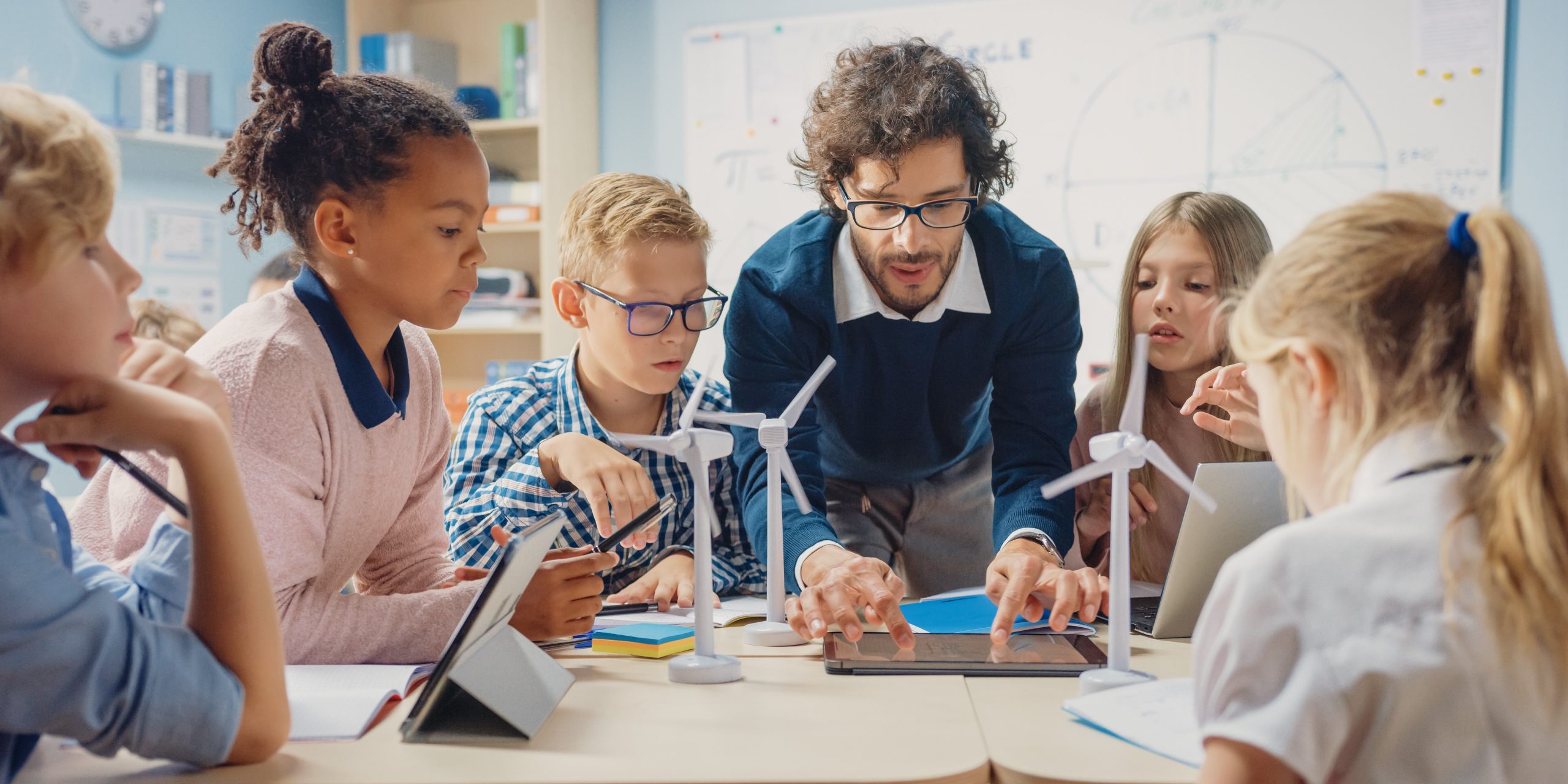Top Primary Science Tuition Singapore to Help Your Child Excel
Top Primary Science Tuition Singapore to Help Your Child Excel
Blog Article
Checking Out the Different Mentor Approaches in Primary Science Education Today
Inquiry-based discovering, hands-on experiments, and the combination of modern technology are redefining exactly how teachers engage young minds. Furthermore, collective strategies and distinguished guideline are being utilized to provide to the diverse requirements of pupils, boosting both interaction and understanding.
Inquiry-Based Discovering
Inquiry-Based Knowing (IBL) is an instructional strategy that motivates trainees to discover scientific ideas via wondering about, investigation, and hands-on experimentation. This method highlights the role of students as active participants in their discovering, advertising crucial reasoning and analytic skills. By involving with real-world questions, pupils become interested and determined, which boosts their understanding of clinical principles.
In IBL, educators function as facilitators, assisting pupils as they browse their queries as opposed to delivering info straight. This student-centered method permits for distinction, accommodating various discovering rates and designs. Pupils establish abilities in formulating theories, designing experiments, and evaluating data, which are crucial for scientific literacy.
Additionally, IBL cultivates partnership amongst trainees, urging them to share findings and ideas. This collective questions advertises social abilities and a feeling of community within the class. In addition, the procedure of inquiry urges durability, as trainees find out to welcome failure as a tipping stone toward understanding.
Hands-On Experiments
Hands-on experiments are a vital component of reliable science education and learning, matching the principles of inquiry-based learning. These experiments allow pupils to involve straight with clinical ideas, cultivating a much deeper understanding via experiential understanding. By manipulating materials and observing results, young learners can comprehend abstract concepts in substantial ways.
Such tasks advertise vital reasoning and analytic skills, as pupils assume outcomes, conduct experiments, and evaluate outcomes. This procedure motivates them to ask concerns, improve their understanding, and develop a clinical state of mind. Hands-on experiments can be tailored to diverse learning styles, guaranteeing that all trainees have the chance to engage meaningfully with the web content.
Additionally, hands-on experiments usually motivate cooperation amongst peers, promoting team effort and communication abilities. Operating in groups makes it possible for trainees to share concepts, discuss searchings for, and gain from one an additional, which improves their general instructional experience.
Incorporating hands-on experiments right into the key science educational program not just enhances the learning atmosphere yet also cultivates a long-lasting rate of interest in science. By actively getting involved in their education and learning, trainees are more most likely to develop an interest for scientific questions that expands beyond the classroom.

Technology Integration
Integrating technology into primary science education has actually ended up being increasingly necessary in fostering pupil involvement and improving learning results. Using electronic devices, such as interactive simulations, online labs, and instructional software program, supplies trainees with possibilities to check out scientific ideas in innovative means. These sources facilitate a much deeper understanding of complex subjects by allowing students to visualize and control variables that would certainly be impractical in a standard classroom setting.
Moreover, innovation assimilation encourages individualized learning experiences. Trainees can proceed at their very own rate, taking another look at tough principles via multimedia resources, which satisfy different understanding designs. This versatility not just supports private development but likewise cultivates a feeling of freedom in learners.
Additionally, innovation acts as a bridge to real-world science, connecting pupils with current research and expert contributions. Access to scientific journals and on the internet data sources widens trainees' viewpoints on clinical questions and fosters essential believing skills.
Collaborative Discovering
Joint discovering plays a crucial role in primary science education and learning by fostering synergy and communication skills among students. This approach urges learners to collaborate, share knowledge, and engage in problem-solving, which improves their understanding of scientific ideas. By taking part in group activities, trainees discover to express their ideas, pay attention to diverse perspectives, and bargain options, website here every one of which are important abilities in both real-world and scholastic contexts.

Study shows that joint knowing can bring about enhanced inspiration and involvement in scientific research subjects, as students discover enjoyment in shared experiences (primary science tuition Singapore). Furthermore, this approach prepares students for future collaborative endeavors, outfitting them with the abilities essential for efficient teamwork in higher education and learning and specialist atmospheres. Inevitably, accepting collaborative understanding in primary science education can substantially enrich the learning experience and promote a deeper understanding of clinical questions
Differentiated Direction

Set apart direction can show up in numerous methods, such as differing the content, procedures, or items of understanding. Educators might make use of tiered jobs that provide differing levels of complexity, enabling pupils to function at their corresponding readiness levels. Additionally, flexible organizing techniques can help with collaboration among students with different capacities, promoting peer knowing.
Assessment plays a critical function in this technique, as it notifies instruction and assists educators comprehend each trainee's distinct needs. Formative evaluations, such as quizzes and monitorings, can assist teachers in changing their methods to boost discovering outcomes. primary science tuition Singapore. Ultimately, by executing set apart guideline in key scientific research education, instructors can cultivate a more equitable and effective understanding environment, empowering all pupils to reach their complete possibility in recognizing clinical phenomena
Conclusion
In summary, the i thought about this varied training techniques in main science education, including inquiry-based learning, hands-on experiments, innovation assimilation, collective understanding, and set apart instruction, collectively add to a more efficient learning atmosphere. These approaches promote critical thinking, analytic abilities, and a much deeper comprehension of clinical ideas. By applying these methods, instructors can develop interesting and supportive classrooms that deal with the diverse go to this website requirements of pupils, inevitably fostering a long-lasting passion in scientific research and improving academic achievement.
Inquiry-Based Understanding (IBL) is a pedagogical strategy that encourages pupils to check out scientific principles via doubting, investigation, and hands-on trial and error.Collective discovering plays a vital duty in key science education by promoting team effort and interaction skills amongst trainees.Research study indicates that collaborative learning can lead to enhanced motivation and interaction in science topics, as students find enjoyment in common experiences.In cultivating an inclusive understanding environment, separated direction emerges as an essential technique to fit the varied requirements and capabilities of pupils in main science education. Inevitably, by carrying out set apart instruction in primary scientific research education and learning, educators can grow a much more fair and reliable understanding setting, empowering all trainees to reach their full potential in recognizing scientific sensations.
Report this page